
Hamlin's Wizard Oil was an American patent medicine sold as a cure-all under the slogan "There is no Sore it will Not Heal, No Pain it will not Subdue."

Hamlin's Wizard Oil was an American patent medicine sold as a cure-all under the slogan "There is no Sore it will Not Heal, No Pain it will not Subdue."
First produced in 1861 in Chicago [1] by former magician John Austin Hamlin and his brother Lysander Butler Hamlin, it was primarily sold and used as a liniment for rheumatic pain and sore muscles, but was advertised as a treatment for pneumonia, cancer, diphtheria, earache, toothache, headache, and hydrophobia. [1] [2] It was made of 50–70% alcohol containing camphor, ammonia, chloroform, sassafras, cloves, and turpentine, and was said to be usable both internally and topically. [2]
Traveling performance troupes advertised the product in medicine shows across the Midwest, [3] [4] with runs as long as six weeks in a town. They used horse-drawn wagons and dressed in silk top hats, frock coats, pinstriped trousers, and patent leather shoes—with spats. [5] They distributed song books at the shows and in pharmacies. [6] [7] Performers included James Whitcomb Riley, singer and composer Paul Dresser from Indiana, [8] and southern gospel music progenitor Charles Davis Tillman.
At these gatherings John Austin Hamlin delivered lectures replete with humor borrowed from the writings of Robert Jones Burdette. [9]
Grinnell College research points out that the Hamlins claimed efficacy for Wizard Oil on not only human beings but also horses and cattle, one poster displaying an elephant drinking the product by lifting the bottle with its trunk. Bottles came in 35¢ and 75¢ sizes. [10] Carl Sandburg inserted two versions of lyrics titled "Wizard Oil" together with a tune into his American Songbag (1927). [11]
John Austin Hamlin would use the profits of Hamlin's Wizard Oil to found and manage Chicago's Grand Opera House. [12]
In 1916, Lysander's son Lawrence B. Hamlin of Elgin, by then manager of the firm, was fined $200 under the 1906 Pure Food and Drug Act for advertising that Hamlin's Wizard Oil could "check the growth and permanently kill cancer." [1]
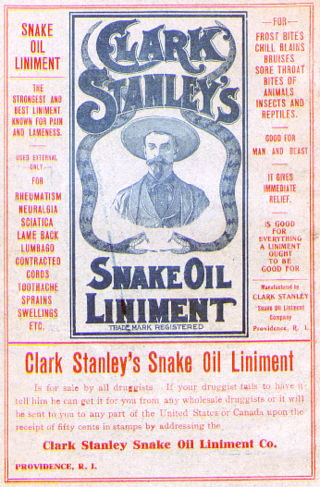
Snake oil is a term used to describe deceptive marketing, health care fraud, or a scam. Similarly, snake oil salesman is a common label used to describe someone who sells, promotes, or is a general proponent of some valueless or fraudulent cure, remedy, or solution. The term comes from the "snake oil" that used to be sold as a cure-all elixir for many kinds of physiological problems. Many 19th-century United States and 18th-century European entrepreneurs advertised and sold mineral oil as "snake oil liniment", making claims about its efficacy as a panacea. Patent medicines that claimed to be a panacea were extremely common from the 18th century until the 20th, particularly among vendors masking addictive drugs such as cocaine, amphetamine, alcohol, and opium-based concoctions or elixirs, to be sold at medicine shows as medication or products promoting health.

Phineas Parkhurst Quimby was an American folk healer, mentalist and mesmerist. His work is widely recognized as foundational to the New Thought spiritual movement.

Quackery, often synonymous with health fraud, is the promotion of fraudulent or ignorant medical practices. A quack is a "fraudulent or ignorant pretender to medical skill" or "a person who pretends, professionally or publicly, to have skill, knowledge, qualification or credentials they do not possess; a charlatan or snake oil salesman". The term quack is a clipped form of the archaic term quacksalver, from Dutch: kwakzalver a "hawker of salve". In the Middle Ages the term quack meant "shouting". The quacksalvers sold their wares at markets by shouting to gain attention.
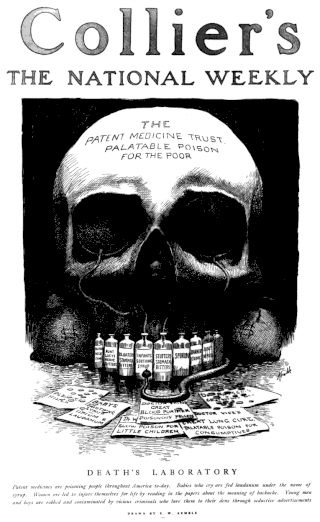
A patent medicine is a non-prescription medicine or medicinal preparation that is typically protected and advertised by a trademark and trade name, and claimed to be effective against minor disorders and symptoms, as opposed to a prescription drug that could be obtained only through a pharmacist, usually with a doctor's prescription, and whose composition was openly disclosed. Many over-the-counter medicines were once ethical drugs obtainable only by prescription, and thus are not patent medicines.
A panacea, named after the Greek goddess of universal remedy Panacea, is any supposed remedy that is claimed to cure all diseases and prolong life indefinitely. It was in the past sought by alchemists in connection with the elixir of life and the philosopher's stone, a mythical substance that would enable the transmutation of common metals into gold. Through the 18th and 19th centuries, many "patent medicines" were claimed to be panaceas, and they became very big business. The term "panacea" is used in a negative way to describe the overuse of any one solution to solve many different problems, especially in medicine. The word has acquired connotations of snake oil and quackery.
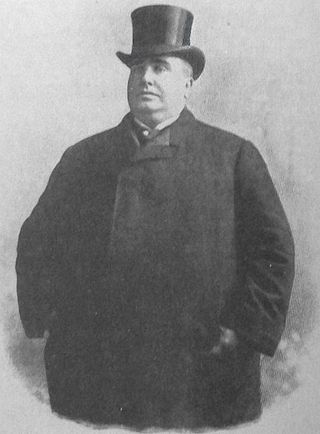
Paul Dresser was an American singer, songwriter, and comedic actor of the late nineteenth and early twentieth centuries. Dresser performed in traveling minstrel and medicine-wagon shows and as a vaudeville entertainer for decades, before transitioning to music publishing later in life. His biggest hit, "On the Banks of the Wabash, Far Away" (1897), was the best selling song of its time. Although Dresser had no formal training in music composition, he wrote ballads that had wide appeal, including some of the most popular songs of the era. During a career that spanned nearly two decades, from 1886 to 1906, Dresser composed and published more than 150 songs. Following the success of "Wabash", many newspapers compared Dresser to popular composer Stephen Foster. "On the Banks of the Wabash, Far Away" became the official song of Indiana in 1913. The Paul Dresser Birthplace in Terre Haute is designated as a state shrine and memorial. Dresser was inducted into the Songwriters Hall of Fame in 1970.

Elisha Perkins was a United States physician who created a fraudulent medical device, the Perkins Patent Tractors. Although they were made of steel and brass, Perkins claimed that they were made of unusual metal alloys. Perkins claimed his rods cured inflammation, rheumatism and pain in the head and the face; he applied the points on the aching body part and passed them over the part for about 20 minutes. The device was later the subject of the first placebo research.
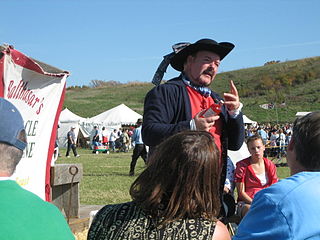
Medicine shows were touring acts that peddled "miracle cure" patent medicines and other products between various entertainments. They developed from European mountebank shows and were common in the United States in the nineteenth century, especially in the Old West.
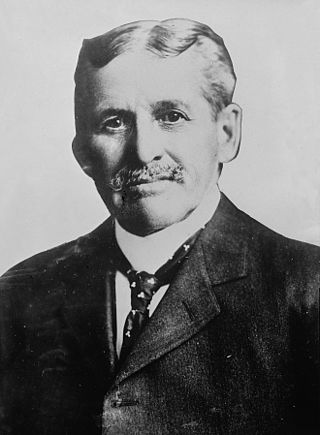
Robert Jones Burdette was an American humorist and clergyman who became noted through his paragraphs in The Hawk Eye newspaper in Burlington, Iowa. Mary G. Burdette was his sister.
"Sweet Betsy from Pike" is an American ballad about the trials of a pioneer named Betsy and her lover Ike who migrate from Pike County to California. This Gold Rush-era song, with lyrics published by John A. Stone in 1858, was collected and published in Carl Sandburg's 1927 American Songbag. It was recorded by Burl Ives on February 11, 1941 for his debut album Okeh Presents the Wayfaring Stranger.
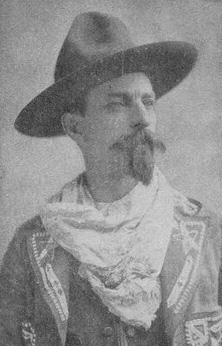
Clark Stanley was an American herbalist and quack doctor who marketed a "snake oil" as a patent medicine, styling himself the "Rattlesnake King" until his fraudulent products were exposed in 1916, popularizing the pejorative title of the "snake oil salesman".
William John Aloysius Bailey was an American patent medicine inventor and salesman. A Harvard University dropout, Bailey falsely claimed to be a doctor of medicine and promoted the use of radioactive radium as a cure for coughs, flu, and other common ailments. Although Bailey's Radium Laboratories in East Orange, New Jersey, was continually investigated by the Federal Trade Commission, he died wealthy from his many devices and products, including an aphrodisiac called Arium, marketed as a restorative that "renewed happiness and youthful thrill into the lives of married peoples whose attractions to each other had weakened."
Soring, or "big lick", is defined as the application of any chemical, mechanical agent, or practice inflicted upon any limb of a horse, that can cause or be expected to cause the horse to suffer physical pain or distress when moving. This results in the horses picking up their front feet higher and faster than they would do in their natural gait. Trainers use soring to give a horse a highly animated gait in a short time period rather than spending time training them to perform this gait naturally. People who sore their horses believe that it gives them a competitive edge over other horses in the show ring. However, soring is illegal in the United States under the Horse Protection Act of 1970. Tennessee Walking Horses are not allowed to be shown without passing a USDA and HPA inspection for soring and physical inspection; they are not allowed to have scars on their pastern as it is associated with soring. Other breeds that have a history of soring including the Racking Horse and the Spotted Saddle Horse.
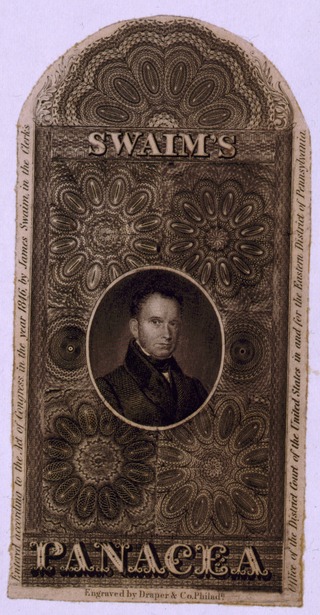
Swaim's Panacea was an American patent medicine sold by William Swaim (1781–1846) of Philadelphia, starting in approximately 1820, with formulations still being sold into at least the 1920s. It was advertised to cure various diseases including scrofula, mercurial disease, deep-seated syphilis, rheumatism, sores, swellings, etc.

Lysander Butler Hamlin was the maker of Hamlin's Wizard Oil, a patent medicine.

Arthur Joseph Cramp was a medical doctor, researcher, and writer. He served as director of the American Medical Association's (AMA) Propaganda for Reform Department from 1906 to 1936. He was a regular contributor to the Journal of the American Medical Association (JAMA). Cramp was "a bitter opponent of proprietary and medicinal abuses." His three volume series on 'Nostrums and Quackery', along with his public lectures to schools, professional groups, and civic organizations across the country, helped bring awareness to the problem of patent medicines or nostrums, by subjecting the claims to scientific analysis. He was critical the 1906 Pure Food and Drug Act, and advocated stronger regulation of product labeling and advertising. In an article announcing his death, the AMA called him "a pioneer in the fight against quackery and fraud in the healing arts."

George Hamlin was an American tenor, prominent on the concert stage as a lieder and oratorio singer and later in the opera house when he sang leading tenor roles with the Philadelphia-Chicago Grand Opera Company. He also recorded extensively on the Victor label.

Dr. Thomas’ Eclectric Oil was a widely used pain relief remedy which was sold in Canada and the United States as a patent medicine from the 1850s into the early twentieth century. Like many patent medicines, it was advertised as a unique cure-all, but mostly contained common ingredients such as turpentine and camphor oil.